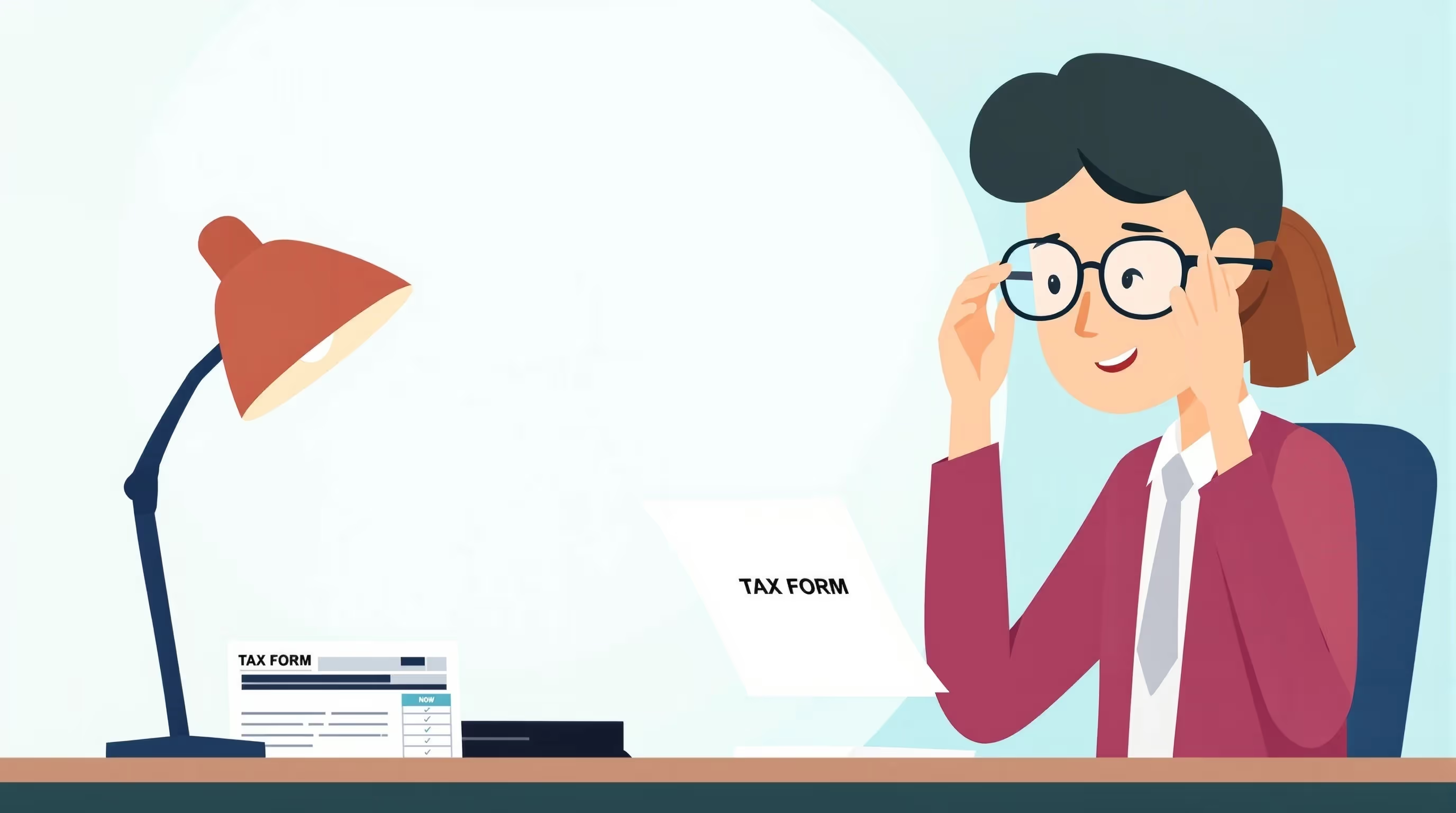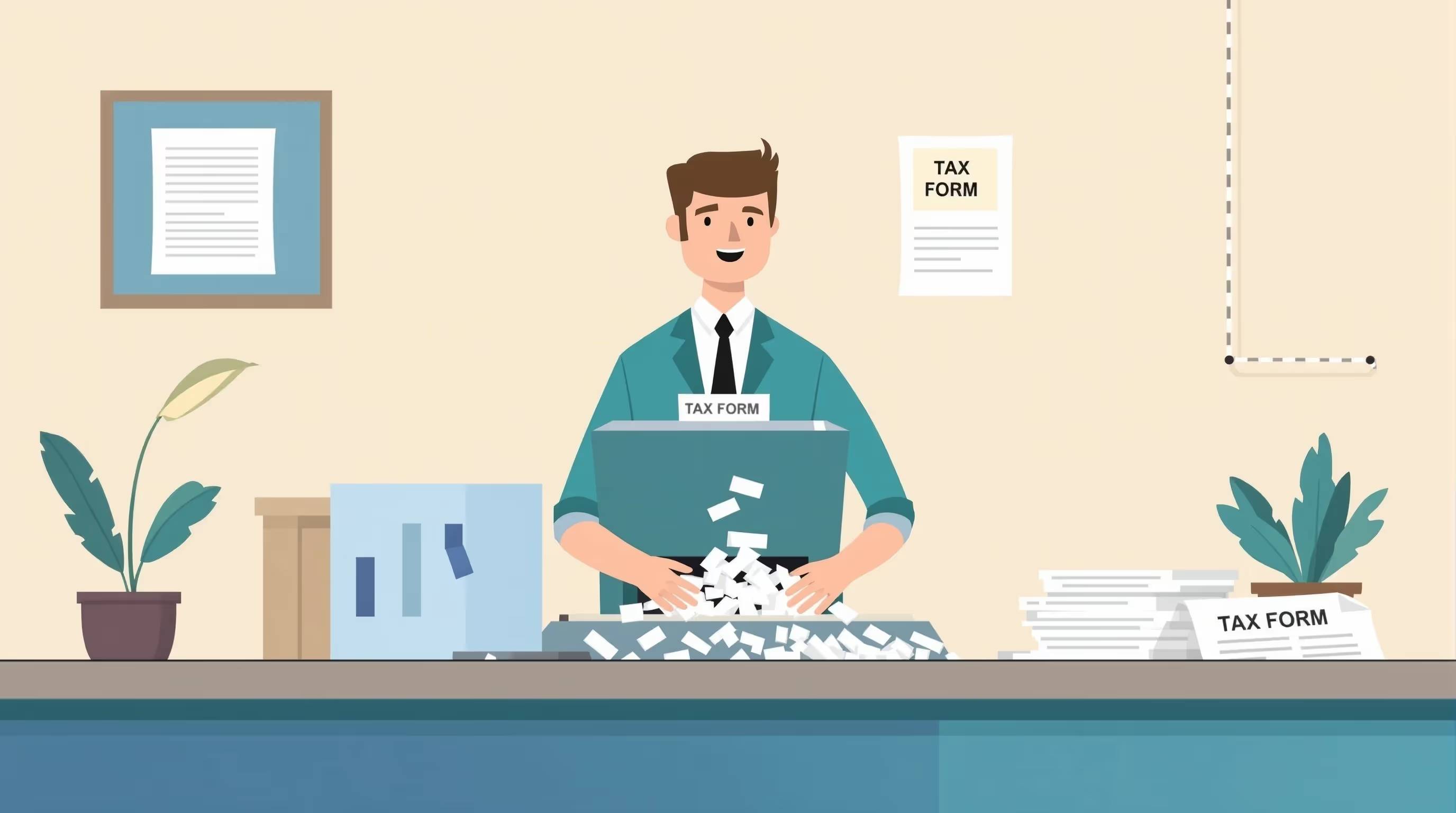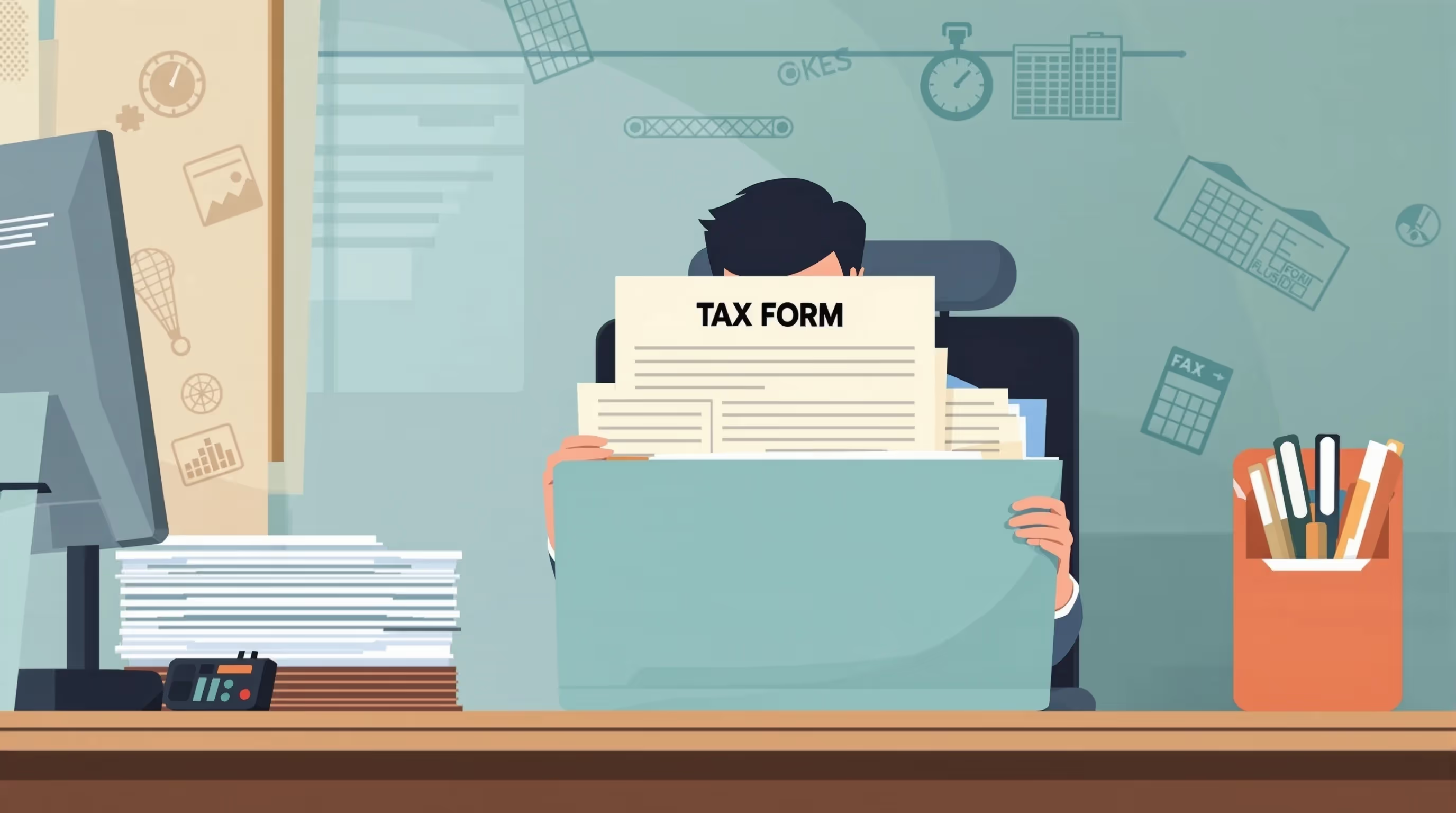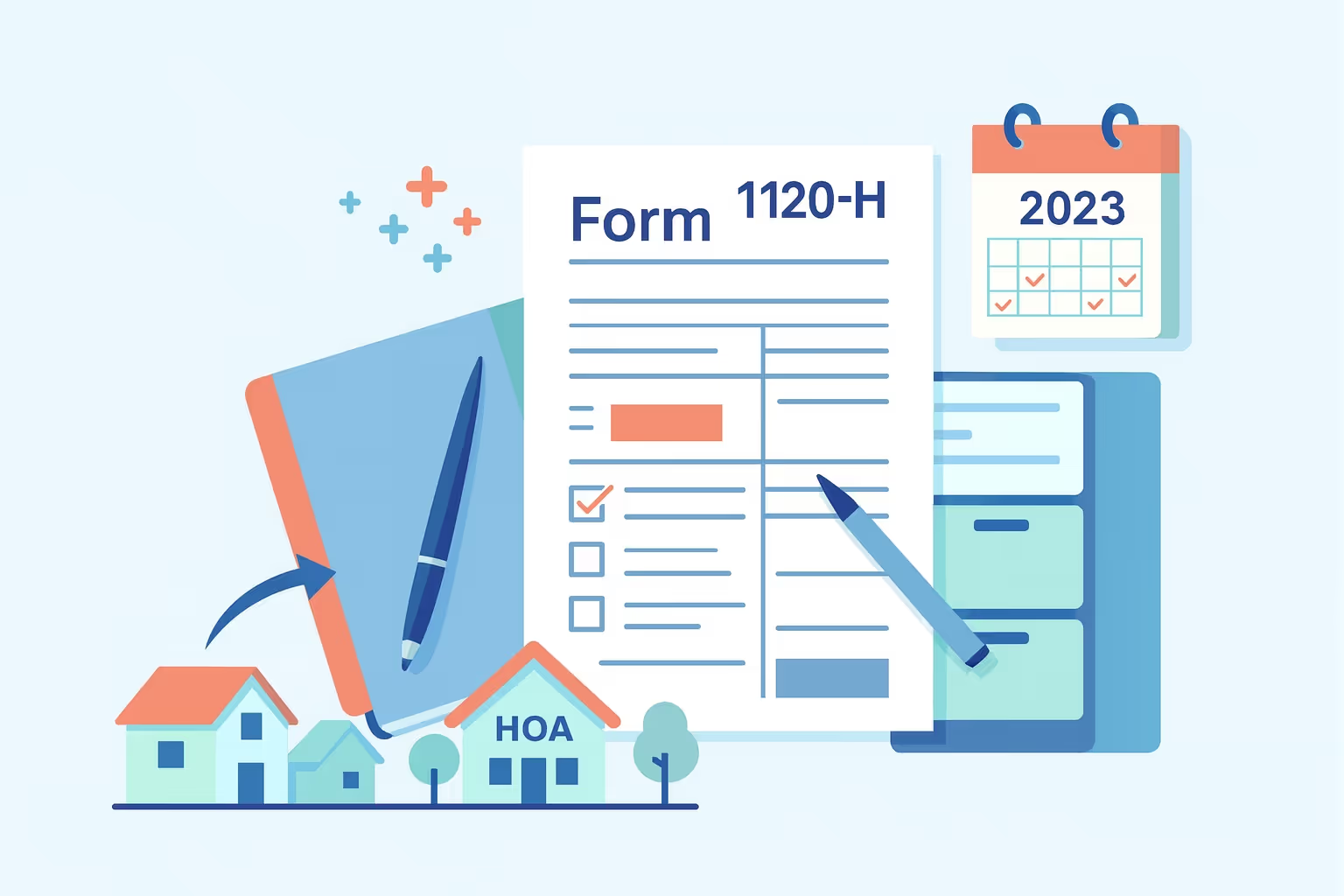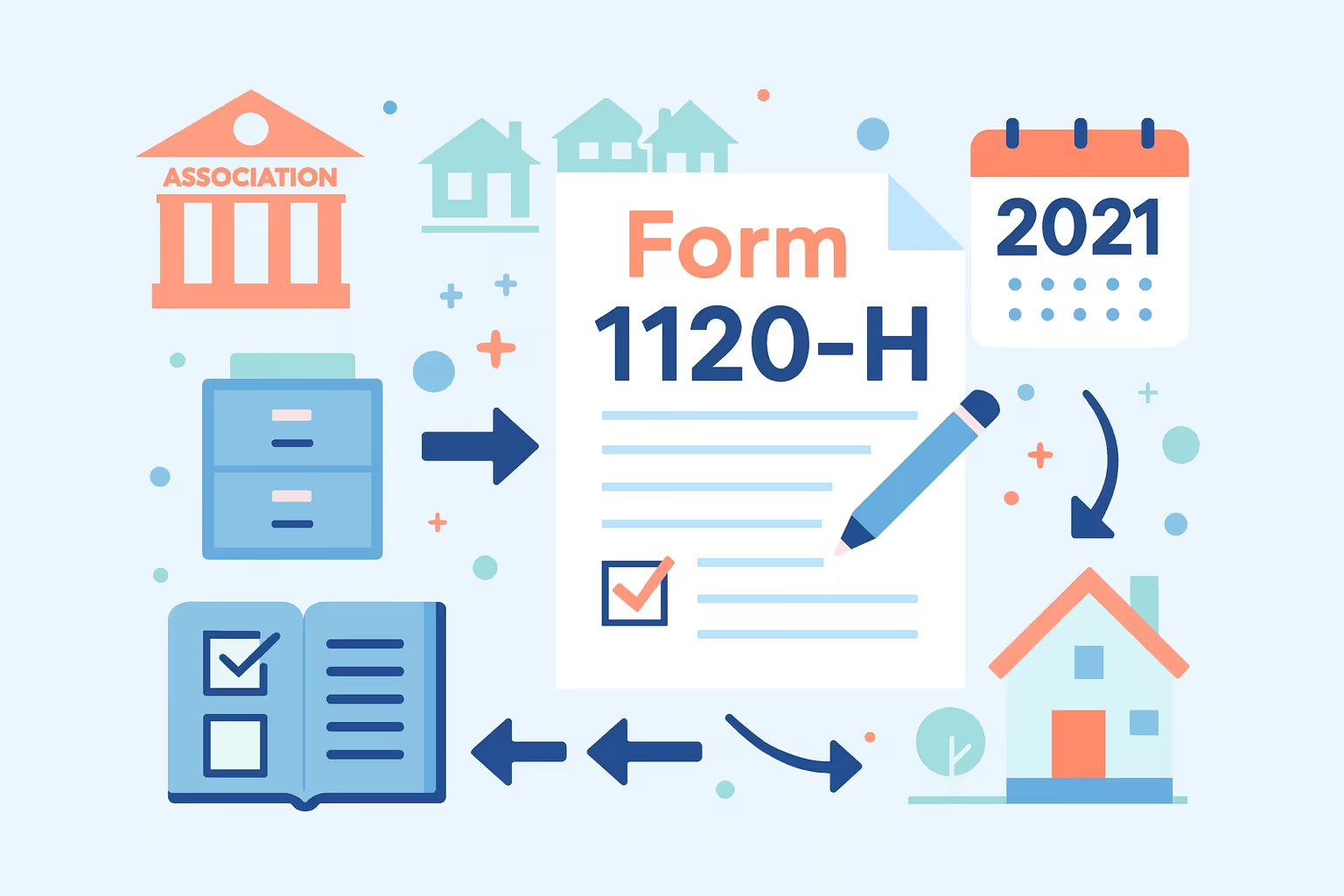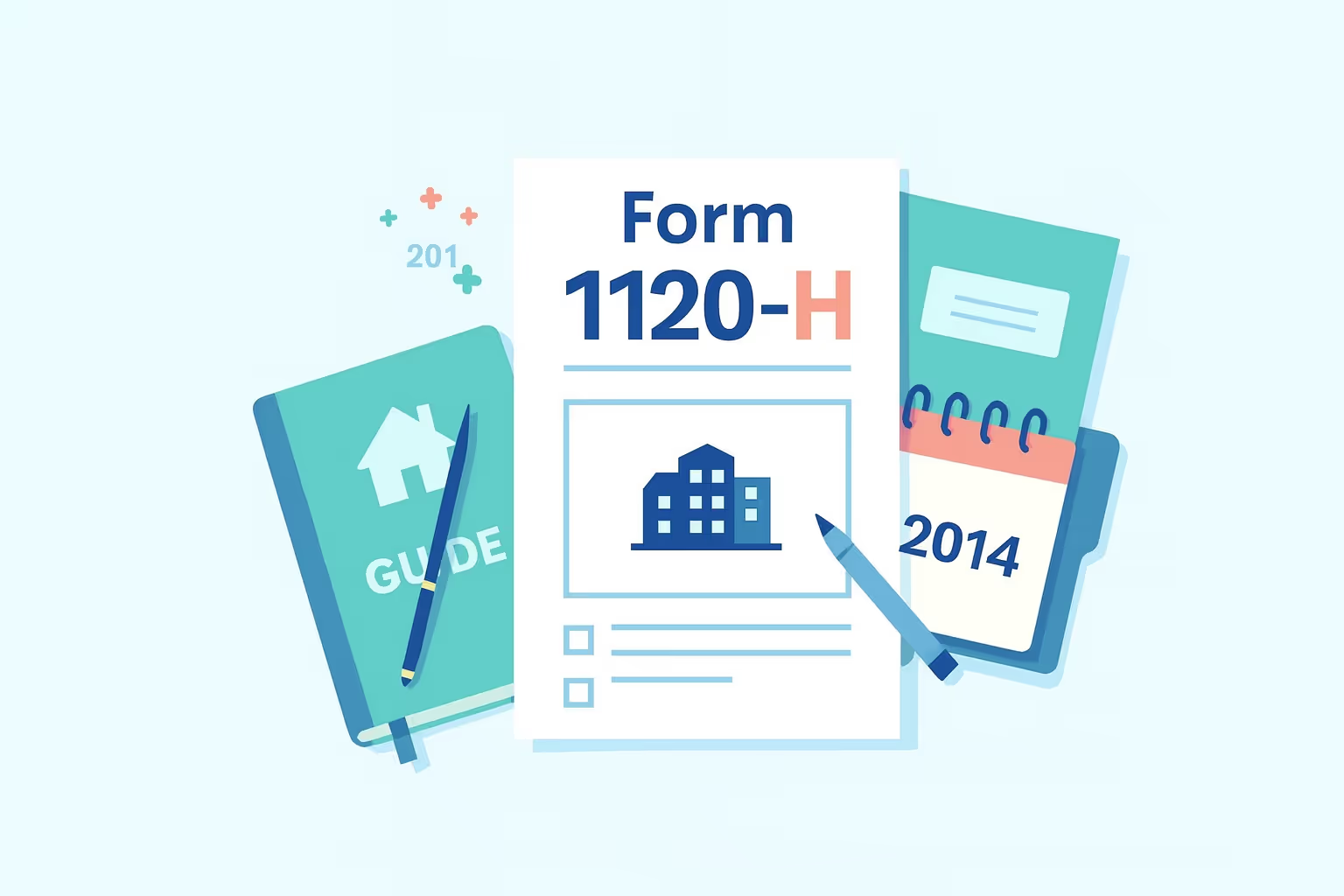Form 1120-H 2016 Instructions: HOA Tax Filing Guide
Filing Form 1120-H helps homeowners' associations simplify their federal tax returns while gaining certain tax benefits under Section 528 of the Internal Revenue Code. This Internal Revenue Service form is specifically designed for condominium associations, residential real estate associations, and timeshare associations that qualify for tax-exempt status. It allows these organizations to exclude from taxable income exempt function income, such as membership dues, assessments, and fees. For the 2016 tax year, understanding the correct filing process and compliance requirements ensures that associations meet federal obligations while avoiding unnecessary tax liability and penalties.
Form 1120-H serves as a specialized income tax return for homeowner associations, making it easier to report taxable income from non-member activities, investments, or rentals. By filing this form, most associations avoid the complexity of a standard corporation income tax return and benefit from a fixed tax rate on non-exempt income. This approach streamlines tax reporting while preserving eligibility for valuable tax exemptions.
This comprehensive guide explains instructions for Form 1120-H 2016 in detail, covering eligibility rules, required documentation, calculations for taxable income, and filing requirements. It is designed to help association board members, managers, and tax professionals accurately file, maintain compliance with IRS regulations, and ensure that homeowners associations efficiently maximize their available tax benefits.
Understanding Form 1120-H and Its Purpose
Form 1120-H is the U.S. Income Tax Return for Homeowners Associations. It enables qualifying organizations, such as condominium management associations, residential real estate associations, and timeshare associations, to benefit from specific tax advantages under Section 528 of the Internal Revenue Code. This form streamlines the reporting of income and expenses by separating exempt and non-exempt income from functions.
What Is Form 1120-H?
This form is a specialized corporation income tax return that helps homeowners' associations pay tax only on their non-exempt income. It excludes exempt function income, which consists of payments received from members for services related to association property, such as maintenance fees or assessments. Associations that file Form 1120-H benefit from a flat tax rate, which reduces the complexity of calculating taxable income under regular corporate tax rules.
Who Can File Form 1120-H?
Homeowners' associations must meet certain conditions to qualify for filing:
- Condominium Management Associations: Organizations that manage, maintain, and care for condominium properties primarily used for residential purposes.
- Residential Real Estate Management Associations: Associations that manage or maintain subdivisions, developments, or similar residential communities.
- Timeshare Associations: Entities that manage timeshare properties where owners have periodic usage rights.
These associations must also meet the 60% gross income test and the 90% expenditure test to maintain their tax-exempt status and qualify for certain tax benefits.
Section 528 Overview
Section 528 of the Internal Revenue Code defines the rules for tax-exempt homeowners' associations. It allows these associations to exclude exempt function income and simplifies their filing requirements. Exempt function income includes membership dues, fees, and assessments used to maintain or improve association property. Income earned from non-members or investment activities is considered non-exempt and subject to income tax.
By understanding Form 1120-H and the advantages it offers, associations can make informed decisions about their filing requirements and ensure compliance with the Internal Revenue Service. Proper use of this form helps most associations achieve the lowest tax liability while maintaining eligibility for valuable exemptions.
What’s New for Tax Year 2016?
The Internal Revenue Service made several adjustments affecting how homeowners' associations filed Form 1120-H for the tax year 2016. While most of the form’s structure remained unchanged, there were significant updates to filing deadlines, penalty amounts, and compliance reminders that associations needed to understand before preparing their returns.
Key Filing Date Changes
The most significant change involved the due dates for filing federal tax returns. The IRS modified corporate filing schedules to align different entity types under more consistent timelines.
- Standard Due Date: The 15th day of the fourth month after the tax year ends (April 15, 2017, for calendar year associations).
- Special Rule for June Year-Ends: For associations with a fiscal year ending June 30, 2016, the filing due date was September 15, 2016.
These updates helped associations plan and avoid confusion about submission deadlines.
Increased Late Filing Penalties
For the 2016 tax year, the Internal Revenue Service updated its penalty structure for associations that failed to file Form 1120-H on time. These penalties apply to all qualifying homeowners associations, condominium management associations, residential real estate management associations, and timeshare associations.
- The penalty for filing more than 60 days late increased to the smaller of the total tax due or $205, up from the previous $135.
- The penalty applies even if the association has no taxable income or owes no tax, emphasizing the importance of meeting filing deadlines.
- Associations that anticipate delays should file Form 7004 to request an automatic six-month extension before the original due date.
- Late payment of taxes may result in additional interest charges, further increasing the total amount owed to the Internal Revenue Service.
Submitting Form 1120-H by the due date or filing an extension helps associations avoid penalties, maintain their tax-exempt status, and ensure compliance with the Internal Revenue Code. Timely filing also protects the organization from unnecessary financial burdens that could impact association property maintenance or member services.
Requirements That Remained the Same
Some core rules for Form 1120-H did not change for 2016, including:
- The 60% gross income test: At least 60% of income must come from exempt function income.
- The 90% expenditure test: At least 90% of expenses must relate to managing or maintaining association property.
- Tax rates: Most associations remained subject to a flat 30% tax rate, while timeshare associations continued to pay a 32% tax rate.
By reviewing these updates and continuing to follow existing guidelines, homeowners' associations could ensure compliance with the Internal Revenue Code, maintain eligibility for certain tax benefits, and avoid penalties when filing Form 1120-H for tax year 2016.
Preparing to File Form 1120-H
Proper preparation is essential for completing Form 1120-H accurately and maintaining compliance with the Internal Revenue Service. Before filing, homeowners' associations should gather key financial documents, verify eligibility, and confirm that all requirements under Section 528 are met.
Essential Documents to Gather
Homeowners' associations should organize the following materials before starting the filing process:
- Financial Records: Annual budgets, income statements, and bank statements for all association accounts. These provide the financial data needed to report gross income and expenditures.
- Member and Assessment Information: Lists of property owners, regular and special assessment records, and any payments received from non-members.
- Governing Documents: Articles of incorporation, bylaws, and management contracts that define the organization’s structure and responsibilities.
Verifying Eligibility
To qualify for filing Form 1120-H, an association must meet two main requirements:
- The 60% Gross Income Test: At least 60% of the association’s gross income must consist of exempt function income. This includes membership dues, assessments, and fees from members for association services.
- The 90% Expenditure Test: At least 90% of total expenditures must be for acquiring, building, managing, maintaining, or caring for association property.
Associations that do not meet these standards must file a regular corporation income tax return (Form 1120) instead. Failing to verify eligibility can result in additional tax liability and penalties.
Proper organization and confirmation of eligibility ensure that the filing process proceeds smoothly and that the association receives the tax benefits available to qualified organizations.
Step-by-Step 2016 Filing Instructions
Step 1: Header Information
- Enter the association’s legal name, address, and EIN exactly as registered, then select condominium management association, residential real estate association, or timeshare association as appropriate.
- Confirm the tax year and filing form to ensure the return aligns with instructions from Form 1120-H 2016 and the Internal Revenue Service records.
Step 2: Items A–E
- Indicate the association type again, report exempt function income, and verify that at least 60 percent of gross income is from members’ assessments, membership dues, and fees.
- Report total expenditures and confirm that at least 90 percent of the association’s expenses relate to acquiring, building, managing, maintaining, or caring for association property, then enter any tax-exempt interest.
Step 3: Income Section (Lines 1–8)
- Report only non-exempt function income, such as interest, dividends, rental income from non-members, royalties, capital gains, and other non-exempt income.
- Do not include exempt income from members because the purpose of Form 1120-H is to exclude exempt function income from the tax return for homeowners' associations.
Step 4: Deductions (Lines 9–18)
- Enter deductions directly connected to producing non-exempt income, including repairs, maintenance of income-producing assets, interest, taxes, and depreciation.
- Claim the $100 specific deduction and ensure each expense is traceable to the income reported so that total deductions accurately reflect the association’s income activities.
Step 5: Tax and Credits (Lines 19–22)
- Compute taxable income by subtracting total deductions and the $100 specific deduction from reported non-exempt income, then apply the correct tax rate of 30 percent for most associations or 32 percent for timeshare associations.
- Enter any allowable tax credits to reduce tax liability and verify calculations against the IRS form instructions to avoid penalties.
Step 6: Payments and Refunds (Lines 23–26)
- Record prior year overpayments, estimated payments, and any extension payments to determine whether the association must pay tax or will receive a refund.
- Review totals to ensure payments align with the due date and the figures reported elsewhere on the corporation income tax return.
Step 7: Final Review and Filing
- Sign the return by an authorized officer, attach the required schedules, and retain copies for a minimum of three years, along with the supporting documentation.
- File Form 1120-H electronically or by mail as directed on the IRS website to complete the federal tax returns process for the tax year.
Filing and Payment Options
Associations can submit Form 1120-H either electronically or by mail, depending on their preferences and available resources. The IRS provides multiple methods for submitting the form and paying any taxes owed.
Electronic Filing (E-file)
Electronic filing allows homeowners' associations to submit Form 1120-H securely through IRS-approved software providers. This filing method offers several practical advantages that make it more efficient than paper submission.
- Electronic filing offers faster processing times and provides immediate confirmation of receipt from the Internal Revenue Service, ensuring the form is submitted successfully.
- Built-in validation tools within e-file software help reduce the chance of errors or omissions, improving the accuracy of federal tax returns.
- Associations using direct deposit can receive refunds more quickly than with paper filings, allowing faster access to any overpaid tax amounts.
- E-filing also helps associations maintain digital records of submitted forms, simplifying future compliance and record-keeping requirements.
Before filing, associations should confirm that their chosen tax preparation software supports the 2016 version of Form 1120-H and follows the correct IRS formatting. Verifying software compatibility and completing electronic submission on time helps associations stay compliant and avoid penalties related to late or incomplete filings.
Paper Filing
Associations that choose to file Form 1120-H by mail must send their completed income tax return to the appropriate Internal Revenue Service Center based on their geographic location. Using the correct address ensures timely processing and helps avoid delays.
- Eastern States: Associations located in states such as New York, Florida, and Pennsylvania should mail their forms to the IRS Center in Cincinnati, Ohio.
- Western States: Associations in states including California, Texas, and Washington should mail their forms to the IRS Center in Ogden, Utah.
- Foreign Addresses: Associations located outside the United States should send their filings to the IRS Center in Ogden, Utah, P.O. Box 409101.
Associations should use secure mailing options and retain copies of their signed forms and attachments for their records.
Payment Methods
Homeowners' associations have several options to pay tax owed when filing Form 1120-H. Selecting the correct payment method helps ensure that payments are processed accurately and recorded under the association’s EIN.
- Electronic Federal Tax Payment System (EFTPS): A free, secure online platform provided by the Internal Revenue Service for electronic tax payments.
- Same-Day Wire Transfer: Available through most financial institutions for associations that require immediate payments.
- Check or Money Order: Payments should be made payable to the “United States Treasury” and include the association’s name, EIN, tax year, and form number.
All tax payments are due by the original filing deadline, regardless of whether an extension request has been submitted. Paying on time and using the correct filing and payment methods helps associations remain compliant with IRS requirements, avoid penalties, and ensure that their federal tax returns are processed without delay.
Common Errors and How to Avoid Them
Mistakes when completing Form 1120-H can lead to unnecessary tax liability, penalties, or delays in processing. By understanding the most frequent errors, homeowner associations can ensure their income tax returns are accurate and compliant.
Frequent Filing Mistakes
- Including exempt function income in gross income can inflate taxable income since member dues, assessments, and fees are excluded under Section 528.
- Misclassifying investment or rental income often results in underreporting tax because interest, dividends, and rental income from non-members are always taxable.
- Deducting unrelated expenses may reduce accuracy since only costs directly related to producing non-exempt income qualify as deductions.
- Omitting the $100 specific deduction is a common oversight, even though all associations filing Form 1120-H are eligible for it regardless of taxable income.
- Failing the 60% or 90% tests can result in the association being disqualified from tax-exempt status, which may lead to additional tax and filing obligations.
Administrative Errors
- Missing an authorized officer’s signature can invalidate the return and delay IRS processing.
- Using outdated forms or instructions can cause discrepancies with current filing requirements.
- Filing after the due date without an approved extension leads to penalties and potential interest charges.
Reviewing these points before submission helps associations avoid errors, maintain compliance, and minimize their overall tax liability.
Special Scenarios and First-Time Filers
Particular homeowners' associations encounter unique circumstances, such as limited activity or initial filing situations, that require additional care.
Dormant or Zero-Activity Associations
Associations with no taxable or non-exempt income should still file Form 1120-H to make the Section 528 election and maintain eligibility for future tax benefits.
Newly Formed Associations
Newly established associations must report their date of formation, any income received, and expenses paid during the tax year to establish accurate records for future filings.
First-Time Filing Tips
First-time filers should remember that submitting Form 1120-H automatically makes the Section 528 election. They should compare both Form 1120-H and Form 1120 to identify the lowest tax option and maintain organized records throughout the year.
Understanding these situations allows associations to remain compliant while reducing the risk of filing errors or unnecessary tax exposure.
Frequently Asked Questions
Who needs to file Form 1120-H for the 2016 tax year?
Homeowners associations, condominium management associations, residential real estate associations, and timeshare associations must file Form 1120-H if they meet the filing requirements under Section 528 of the Internal Revenue Code. Filing this income tax return helps these organizations maintain their tax-exempt status, exclude exempt function income from taxable income, and claim certain tax benefits that reduce overall tax liability for the tax year.
What income qualifies as exempt function income?
Exempt function income consists of membership dues, assessments, and fees paid by members to maintain or improve association property. This income is considered exempt because it supports the organization’s primary purpose and operations. However, any income earned from non-members, investments, or facility rentals is classified as non-exempt function income and must be reported as taxable income on the corporation's income tax return.
What happens if an association fails the 60% or 90% tests?
If an association fails the 60% gross income or 90% expenditure tests, it cannot file Form 1120-H for that tax year and must instead submit a regular corporation income tax return using Form 1120. This means losing the ability to exclude exempt function income, potentially paying higher tax on gross income, and forfeiting certain tax benefits available to qualifying tax-exempt organizations.
How is taxable income calculated on Form 1120-H?
Taxable income is calculated by subtracting total deductions and the $100 specific deduction from non-exempt income reported on Form 1120-H. Associations then apply a 30% tax rate for most associations or a 32% rate for timeshare associations. This calculation determines the amount of tax an organization must pay and ensures accurate reporting of the association’s income and related expenses on its federal tax returns.
What deductions can homeowners' associations claim?
Associations can claim deductions for expenses directly related to producing non-exempt function income, such as interest, depreciation, or repairs on property generating taxable income. However, expenses paid with exempt income, like maintenance funded through membership fees, are not deductible. Correctly calculating total deductions helps ensure accurate reporting and allows homeowners' associations to minimize their tax liability while maintaining compliance with IRS Form 1120-H filing requirements.
Why is it essential to file Form 1120-H correctly?
Filing Form 1120-H correctly allows homeowners' associations to receive specific tax benefits, maintain their tax-exempt status, and avoid penalties from the Internal Revenue Service. Mistakes can increase taxable income, delay processing, or cause the loss of an exemption for the tax year. Associations can use the IRS website or consult a tax professional to ensure accurate completion and timely submission of federal tax returns.






